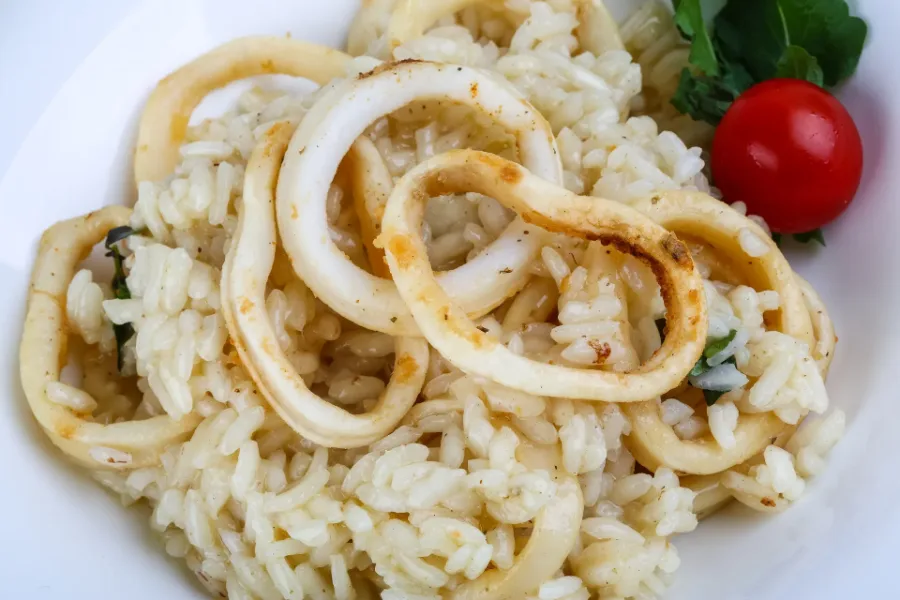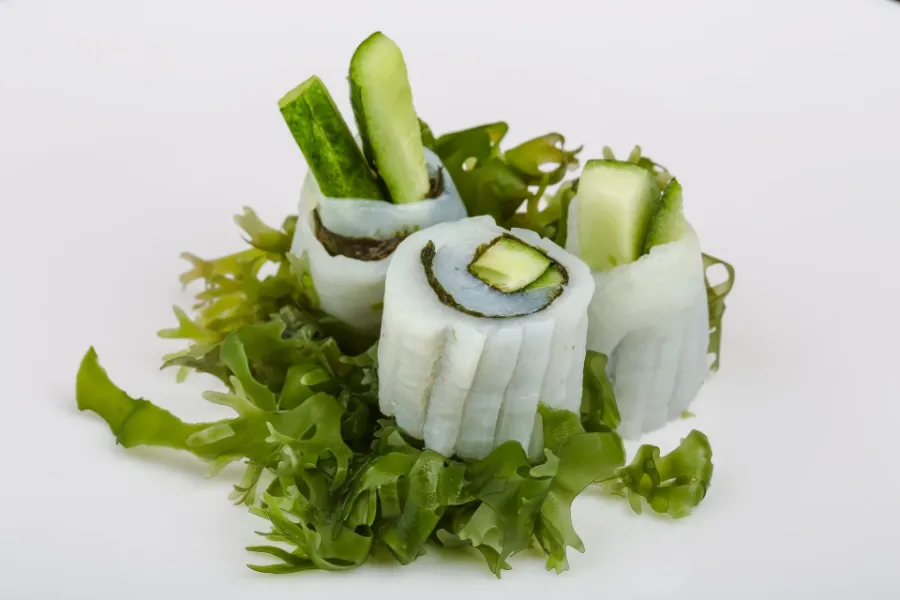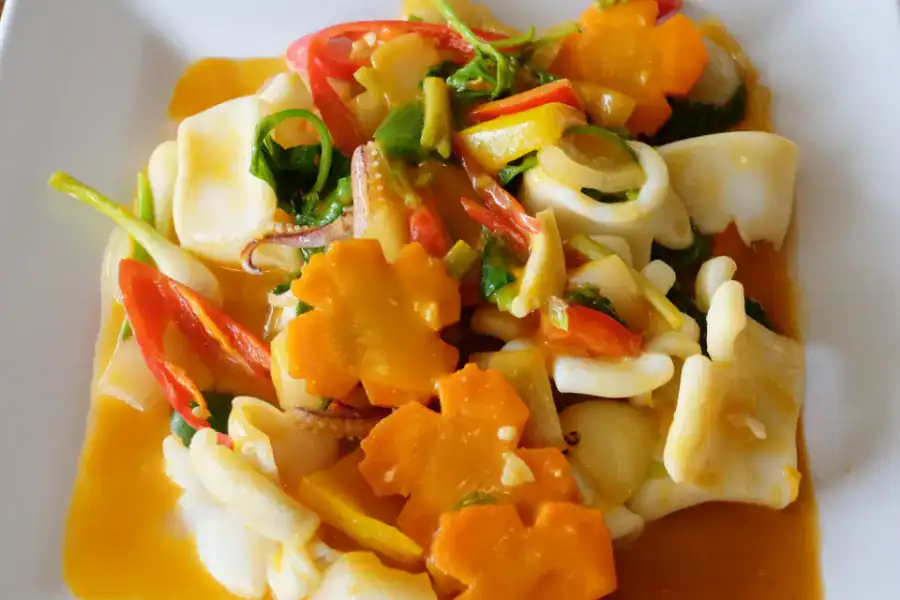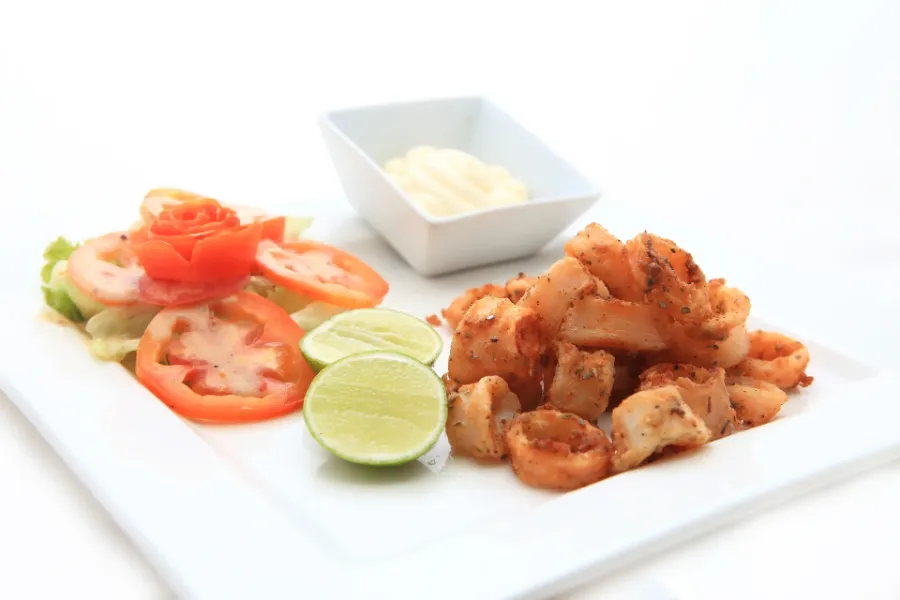Introduction
Calamari vs squid often causes confusion. Many people believe they’re the same, but if you’ve tried both, you’ve likely noticed a difference. This mix-up happens often, whether you’re reading a restaurant menu or cooking at home.
That’s why this post is for you. Whether you’re a seafood lover, home cook, or just curious, knowing the difference between calamari and squid matters. It helps you choose the right one for your dish and cook it the best way.
In this post, we’ll compare calamari vs squid in every way that counts. You’ll learn how they differ in taste, texture, cooking style, and even nutrition. We’ll also share tips on how to cook each one so you never end up with rubbery seafood again.
By the end, you’ll know which wins on the plate and which works best for your next recipe.
There are many other seafood recipes for you to try:
- The Best Shrimp Scampi Recipe with Linguine (Step-by-Step Guide)
- Top 10 Most Popular Shrimp Dishes Loved Around the World
- 10 Irresistible Shrimp Pasta Recipes You’ll Want to Make Tonight
- Wine-Free Mussel Recipes: 10 Global Favorites You Need to Taste
- Easy Garlic Butter Clams – A 15-Minute Seafood Delight
- The Best Garlic Butter Scallops in Shell – Perfect for Dinner Parties
- How to Make Scallops Pasta Like a Pro – Simple & Delicious
Calamari vs Squid? – Understanding the Basics
What Is Squid?
Squid is a type of cephalopod, part of the mollusk family. It has a long body, 10 arms, and a firm texture. You can find squid in oceans all over the world. It’s often used in Asian and Mediterranean cooking. The squid definition includes many species, but not all are used for food.
To read more about this subject, click here!
What Is Calamari?
Calamari is the Italian word for squid, but in cooking, it means something more. Calamari often refers to smaller, more tender types of squid. These are the kinds usually served as fried calamari rings in restaurants. The calamari meaning changes depending on where you are, but most chefs use it to describe squid that cooks fast and stays soft.
Are They the Same Species?
Not always. Calamari often comes from a specific species like Loligo vulgaris, which is smaller and more delicate. Other squids, like giant squids or market squids, may be firmer and larger. So, while all calamari is squid, not all squid is calamari.
Where Do the Terms Come From?
“Calamari” comes from the Italian word calamaro, which is used in Mediterranean cooking. “Squid” is the general term in English and in marine biology. Chefs often use both words, depending on the dish and style.
How Are They Used Around the World?
In Italy, calamari is grilled or fried. In Japan, squid is used raw in sushi or grilled on skewers. Mediterranean dishes often include stuffed calamari. Asian recipes feature stir-fried squid with spicy sauces. No matter the region, both are loved for their bold seafood flavor.
Taste and Texture – What Sets Them Apart?

Calamari’s Flavor and Texture
Calamari has a mild, slightly sweet flavor. Its texture is soft and tender when cooked right. That’s why it’s popular in fried dishes and appetizers. The calamari texture makes it easy to enjoy, even for those new to seafood.
Squid’s Taste and Bite
Squid has a stronger, deeper seafood flavor. It also feels firmer and sometimes chewy. This texture can turn rubbery if not cooked well. Still, many people enjoy the bold squid taste, especially in spicy or grilled dishes.
How Cooking Affects Tenderness
Cooking time matters a lot. Quick frying or high-heat grilling works best for both. Overcooking squid makes it too tough. Light frying keeps chewy seafood like squid or calamari soft. Grilling brings out more flavor but needs careful timing.
Best Ways to Use Each One
Use calamari for fried rings, tapas, and light appetizers. It stays tender and pairs well with lemon or dipping sauces. Use squid in stir-fries, seafood stews, or grilled dishes. Its firm texture holds up well in sauces and spices.
Calamari Vs Squid – Which One Is Easier to Cook?
How to Cook Calamari
Calamari cooks best with fast, high heat. Quick frying or grilling keeps it tender and tasty. Many chefs choose frying calamari because it’s fast and flavorful. Don’t let it stay on the heat too long—it only needs a minute or two.
How to Cook Squid
Squid needs two approaches. You can cook it very fast or very slow. Flash-cooking in a hot pan keeps it soft. Or you can simmer it for a long time in sauces or soups. Both ways help with cooking squid properly.
Common Pitfalls to Avoid
The biggest mistake? Overcooking. Squid turns rubbery fast when left too long on the heat. It becomes chewy and hard to eat. Stick to quick frying or slow braising for the best results. Timing is key for both squid and calamari.
Recipe Ideas and Uses
Use calamari for crispy fried rings or grilled bites. Try it in sandwiches, salads, or as tapas. Squid works great in stuffed recipes, skewers, or rich Mediterranean squid recipes. You can also add it to pasta, curry, or stews.
Nutrition and Health – Is One Better for You?

Protein and Calorie Content
Both squid and calamari are high in protein. On average, they offer around 15–18 grams per 100g. When it comes to calamari calories, it has slightly more fat, especially if fried. Squid is leaner and has fewer calories if grilled or steamed.
Cholesterol and Heart Health
Squid and calamari do contain cholesterol. A 100g serving of squid has about 230mg. That’s a bit high. However, eaten in moderation, they’re still part of a heart-conscious diet. Avoid deep frying to reduce unhealthy fats.
Omega-3 and Vitamin B12 Benefits
Both are good sources of omega-3 seafood fats. These help the heart and brain. You’ll also get a boost of vitamin B12, which supports energy and nerve health. That makes both options great for your overall well-being.
Best for Mediterranean or Low-Fat Diets
You can enjoy both in a healthy way. Grilled squid or lightly sautéed calamari fits well in a Mediterranean diet. If you follow a low-fat diet, avoid batter and oils. Choose steamed or grilled versions instead.
Availability, Cost, and Buying Tips
Which Is Easier to Find?
You can find squid in most grocery stores and fish markets. It’s more common than calamari in many places. Look in the frozen seafood section or ask the fishmonger where to buy squid. Calamari may be listed under squid, especially in supermarkets.
Price Differences
Calamari is usually more expensive. It’s known for its tender texture, which makes it popular in restaurants. Squid, on the other hand, is more budget-friendly. You can often buy it in bulk at a lower cost.
Fresh vs Frozen
Both options are good, but frozen squid is easier to find. Many brands sell frozen squid or fresh calamari, cleaned and ready to cook. Frozen seafood can be just as tasty if handled well. Always check for ice buildup or freezer burn.
How to Choose Good Quality
Look for firm flesh and a clean, ocean-like smell. Avoid squid or calamari with a strong, fishy odor. Fresh ones should look shiny and moist. For frozen, check that the packaging is sealed and the product looks clear, not dull.
Think Sustainability
Whenever possible, buy from sustainable seafood sources. Look for eco-labels or ask where the squid was caught. Choosing wild-caught or responsibly farmed options helps protect ocean life.
Stir-Fried Squid with Vegetables

Stir-Fried Squid with Vegetables
Ingredients
Method
- Prep squid: Clean and cut squid into rings or strips. Pat dry.
- Prep vegetables: Slice bell peppers, carrots, onion, and mince the garlic.
- Heat oil: Heat vegetable oil in a wok or large pan over high heat.
- Stir-fry squid: Add squid and stir-fry for 2–3 minutes until just cooked. Remove and set aside.
- Cook veggies: In the same pan, add garlic, onion, carrot, and bell peppers. Stir-fry for 3–4 minutes until slightly tender.
- Combine and season: Return squid to the pan. Add soy sauce, oyster sauce, sesame oil, salt, and pepper. Stir well.
- Thicken sauce (optional): Mix in cornstarch slurry and cook for 1 minute until the sauce thickens.
- Serve: Serve hot with steamed rice.
FAQs: Calamari vs Squid
1. Is calamari the same as squid?
No. Calamari is a type of squid, but not all squid is calamari. Calamari usually refers to smaller, more tender species.
2. What does calamari taste like?
Calamari has a mild, slightly sweet flavor. It’s softer and less “fishy” than regular squid.
3. Why is squid sometimes chewy?
Squid becomes chewy when overcooked. For tender results, cook it very quickly or braise it slowly.
4. Can I substitute squid for calamari in recipes?
Yes, but the texture may differ. Use short cooking times and tenderize the squid if needed.
5. Which is better for frying—squid or calamari?
Calamari is better for frying because of its soft texture. It stays tender and crispy when deep-fried.
Conclusion – So, Which One Wins on the Plate?
Both calamari and squid bring something special to the table. Calamari is tender, mild, and perfect for quick frying. Squid has a firmer bite and stronger seafood flavor. It works well in rich dishes like stews and stir-fries.
In terms of cooking, calamari is easier for beginners. You can fry or grill it quickly with great results. Squid needs a bit more care. Cook it fast or let it simmer slowly. If not, it gets chewy.
Nutritionally, both are high in protein and low in fat. Squid has fewer calories, while calamari may offer better texture when fried. They’re both great choices for a healthy, balanced diet—especially when grilled or steamed.
So, which one wins in the squid vs calamari debate? That depends on your taste and recipe. Try both. See which one fits your kitchen style and flavor preference. Let us know in the comments—do you prefer tender calamari or bold, robust squid? We’d love to hear your seafood stories and favorite ways to cook them!
- For more recipes, try our:
- How to Make Classic Shakshuka – A Quick and Easy Recipe
- Top 10 Must-Try Crepe Filling Recipes (Perfect for Any Occasion)
- Ciabatta vs. Focaccia: Which Italian Bread Is Best for Your Recipe?
- The Best Swedish Meatballs Recipe: A Step-by-Step Guide with Tips
- How to Make Italian Meatballs That Are Better Than Your Favorite Restaurant’s


4 thoughts on “Seafood Showdown: Calamari vs Squid – Which One Wins on the Plate?”